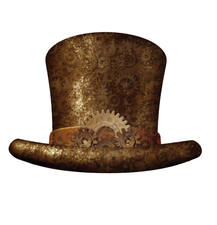DDS-based Rasp Pi function generator
Pass the Hat

© Lead Image © lightwise, 123RF.com
A touch display, a case, and a custom add-on board transform the humble Rasp Pi into a high-performance function generator that rivals expensive commercial offerings.
Modern laboratory instruments are a marvel of integration, combining hardware, software, and often mechanical components to produce versatile and highly functional units that bring real value to the engineers and technologists who use them. In this article, I aim to show how such an instrument might be put together by combining the Raspberry Pi with several elements to provide a low-cost and flexible function generator that can rival its more expensive commercial cousins on price and possibly beat them in terms of flexibility.
Function Generator
A signal or function generator is a versatile frequency source able to output a signal in a number of output waveshapes and at an adjustable amplitude and frequency from direct current (DC) up into the high-frequency electromagnetic radio frequency (RF) region, depending on the application. Sophisticated instruments can also include frequency, phase, or amplitude modulation useful for testing radio transmitters and receivers.
No engineer's workbench is complete without such an instrument. Together with an oscilloscope, it allows an engineer to characterize the frequency and phase response of an amplifier, to test and calibrate counters and frequency meters, and to replace built-in oscillators in devices under test or during development.
[...]
Buy this article as PDF
(incl. VAT)
Buy Linux Magazine
Subscribe to our Linux Newsletters
Find Linux and Open Source Jobs
Subscribe to our ADMIN Newsletters
Support Our Work
Linux Magazine content is made possible with support from readers like you. Please consider contributing when you’ve found an article to be beneficial.

News
-
Parrot OS Switches to KDE Plasma Desktop
Yet another distro is making the move to the KDE Plasma desktop.
-
TUXEDO Announces Gemini 17
TUXEDO Computers has released the fourth generation of its Gemini laptop with plenty of updates.
-
Two New Distros Adopt Enlightenment
MX Moksha and AV Linux 25 join ranks with Bodhi Linux and embrace the Enlightenment desktop.
-
Solus Linux 4.8 Removes Python 2
Solus Linux 4.8 has been released with the latest Linux kernel, updated desktops, and a key removal.
-
Zorin OS 18 Hits over a Million Downloads
If you doubt Linux isn't gaining popularity, you only have to look at Zorin OS's download numbers.
-
TUXEDO Computers Scraps Snapdragon X1E-Based Laptop
Due to issues with a Snapdragon CPU, TUXEDO Computers has cancelled its plans to release a laptop based on this elite hardware.
-
Debian Unleashes Debian Libre Live
Debian Libre Live keeps your machine free of proprietary software.
-
Valve Announces Pending Release of Steam Machine
Shout it to the heavens: Steam Machine, powered by Linux, is set to arrive in 2026.
-
Happy Birthday, ADMIN Magazine!
ADMIN is celebrating its 15th anniversary with issue #90.
-
Another Linux Malware Discovered
Russian hackers use Hyper-V to hide malware within Linux virtual machines.

